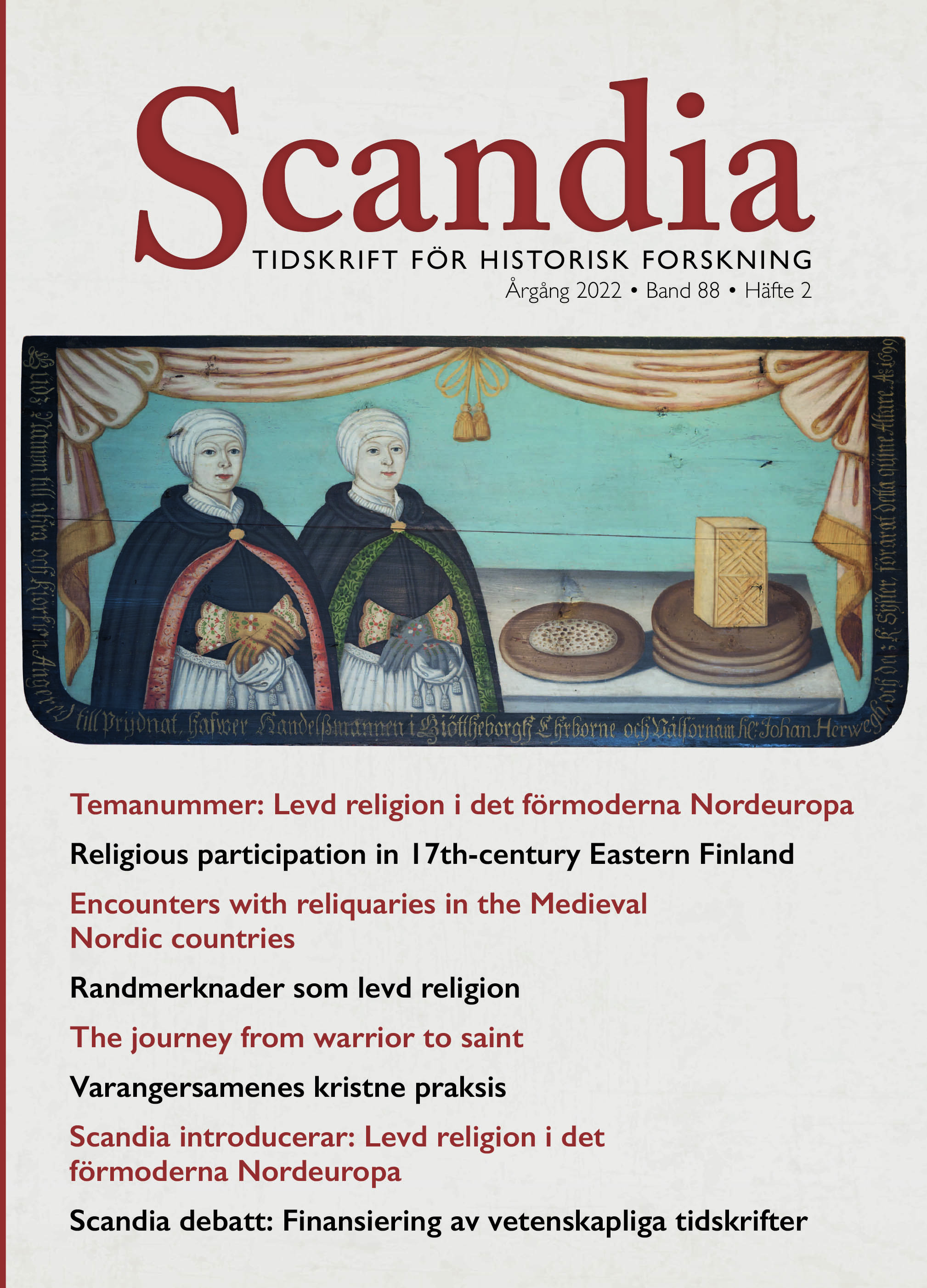Waltheof: The Journey from Warrior to Saint
DOI:
https://doi.org/10.47868/scandia.v88i2.24802Abstract
The elevation to sainthood of the English earl, Waltheof, who was beheaded, ostensibly for rebellion against William the Conqueror, exemplifies the process by which non-elite and elite communities coalesced to construct a saintly cult in late eleventh- and twelfth-century England. This paper traces the development of Waltheof’s cult from the time of his execution and burial through the mid-twelfth century and seeks to place his path to sainthood within the context of the use of hagiographical material as exemplars for the lives of the laity.
We have drawn heavily on the Passio Waldevi, a hagiographical account of Waltheof’s life and martyrdom, written at Crowland Abbey in the early twelfth century, along with other materials, most notably early miracles of Waltheof, contained in the same manuscript (Douai BM MS 852). This account, though written to promote the official cult of Waltheof, nevertheless gives hints of earlier, spontaneous veneration of Waltheof. As a point of comparison, we look at earlier hagiographical materials, most notably English and Latin accounts of the life of St. Guthlac and several saints that figure prominently in Bede. To put Waltheof’s death and cult in historical context we consider historical materials in Old English (Anglo-Saxon Chronicle and Easter Table Chronicle), Latin (Orderic Vitalis and William of Malmsbury, among others), and Norman French (Geoffrei de Gaimar), and we briefly consider the Norse evidence (Snorri Sturluson) for Waltheof’s wider reputation. While most of our evidence is textual, we have also considered archaeological evidence, particularly as it relates to burials, both saintly and deviant. We argue that this evidence, taken
together, indicates that Waltheof’s cult draws on long-standing practices and attitudes towards sanctity and the Christian life in the centuries before the Norman Conquest of England.





